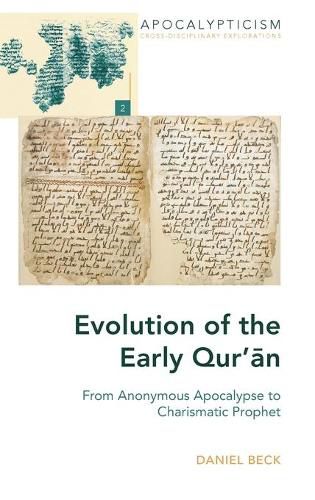Readings Newsletter
Become a Readings Member to make your shopping experience even easier.
Sign in or sign up for free!
You’re not far away from qualifying for FREE standard shipping within Australia
You’ve qualified for FREE standard shipping within Australia
The cart is loading…






This title is printed to order. This book may have been self-published. If so, we cannot guarantee the quality of the content. In the main most books will have gone through the editing process however some may not. We therefore suggest that you be aware of this before ordering this book. If in doubt check either the author or publisher’s details as we are unable to accept any returns unless they are faulty. Please contact us if you have any questions.
Critical scholarship on the Qur'an and early Islam has neglected the enigmatic earliest surahs. Advocating a more evolutionary analytical method, this book argues that the basal surahs are logical, clear, and intelligible compositions. The analysis systematically elucidates the apocalyptic context of the Qur'an’s most archaic layers. Decisive new explanations are given for classic problems such as what the surah of the elephant means, why an anonymous man is said to frown and turn away from a blind man, why the prophet is summoned as one who wraps or cloaks himself, and what the surah of the qadr refers to.
Grounded in contemporary context, the analysis avoids reducing these innovative recitations to Islamic, Jewish, or Christian models. By capitalizing on recent advances in fields such as Arabian epigraphy, historical linguistics, Manichaean studies, and Sasanian history, a very different picture of the early quranic milieu emerges. This picture challenges prevailing critical and traditional models alike. Against the view that quranic revelation was a protracted process, the analysis suggests a more compressed timeframe, in which Mecca played relatively little role. The analysis further demonstrates that the earliest surahs were already intimately connected to the progression of the era’s cataclysmic Byzantine-Sasanian war. All scholars interested in the Qur'an, early Islam, late antique history, and the apocalyptic genre will be interested in the book’s dynamic new approach to resolving intractable problems in these areas.
$9.00 standard shipping within Australia
FREE standard shipping within Australia for orders over $100.00
Express & International shipping calculated at checkout
This title is printed to order. This book may have been self-published. If so, we cannot guarantee the quality of the content. In the main most books will have gone through the editing process however some may not. We therefore suggest that you be aware of this before ordering this book. If in doubt check either the author or publisher’s details as we are unable to accept any returns unless they are faulty. Please contact us if you have any questions.
Critical scholarship on the Qur'an and early Islam has neglected the enigmatic earliest surahs. Advocating a more evolutionary analytical method, this book argues that the basal surahs are logical, clear, and intelligible compositions. The analysis systematically elucidates the apocalyptic context of the Qur'an’s most archaic layers. Decisive new explanations are given for classic problems such as what the surah of the elephant means, why an anonymous man is said to frown and turn away from a blind man, why the prophet is summoned as one who wraps or cloaks himself, and what the surah of the qadr refers to.
Grounded in contemporary context, the analysis avoids reducing these innovative recitations to Islamic, Jewish, or Christian models. By capitalizing on recent advances in fields such as Arabian epigraphy, historical linguistics, Manichaean studies, and Sasanian history, a very different picture of the early quranic milieu emerges. This picture challenges prevailing critical and traditional models alike. Against the view that quranic revelation was a protracted process, the analysis suggests a more compressed timeframe, in which Mecca played relatively little role. The analysis further demonstrates that the earliest surahs were already intimately connected to the progression of the era’s cataclysmic Byzantine-Sasanian war. All scholars interested in the Qur'an, early Islam, late antique history, and the apocalyptic genre will be interested in the book’s dynamic new approach to resolving intractable problems in these areas.